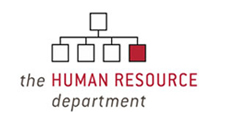Three Good Reasons for an Anti-Bullying Policy
I don't know if I've ever really been bullied. I can picture the quintessential bully: the big kid that pins the little kid against his locker, demanding his lunch money as ransom. And who can forget Farkus, the town bully in A Christmas Story? But bullying isn't relegated to the school lunchroom or playground. Heck, it's not confined to physical boundaries at all. You've heard of cyber bullying, right?
Most companies have policies and programs designed to prevent harassment and workplace violence. So how is bullying different? And why do you need a anti-bullying policy?
The basic difference between bullying and harassment is that harassment typically refers to repeated, hostile behaviors based on religion, age, ethnicity, sexual orientation, gender, disability or another legally protected status. With bullying, these behaviors aren't specific to individuals who fall into one of these categories. And whereas workplace violence refers to physical violence, bullying is typically non-physical. It's psychological. On the surface, it can appear subtle. It's consquences are anything but.
At minimum, an anti-bullying policy reinforces your code of ethics or code of conduct.
From a purely practical business perspective, there are at least three strong arguments for taking the time to implement an anti-bullying policy:
Most companies have policies and programs designed to prevent harassment and workplace violence. So how is bullying different? And why do you need a anti-bullying policy?
The basic difference between bullying and harassment is that harassment typically refers to repeated, hostile behaviors based on religion, age, ethnicity, sexual orientation, gender, disability or another legally protected status. With bullying, these behaviors aren't specific to individuals who fall into one of these categories. And whereas workplace violence refers to physical violence, bullying is typically non-physical. It's psychological. On the surface, it can appear subtle. It's consquences are anything but.
At minimum, an anti-bullying policy reinforces your code of ethics or code of conduct.
From a purely practical business perspective, there are at least three strong arguments for taking the time to implement an anti-bullying policy:
- Reduce employee turnover
- Improve productivity
- Mitigate the risk of litigation
According to research presented in The People Bottomline, victims of work place trauma can spend up to 52% of their time "defending themselves, and networking for support, thinking about the situation, being demotivated and stressed, let alone absences due to stress-related illnesses."
But aside from the return on investment for implementing a policy or program that lifts morale and productivity and keeps employees in the workplace instead of the courtroom, at the most basic level, it's the right thing to do.
Authored by Sandy Turba
Labels: workplace bullying



0 Comments:
Post a Comment
Subscribe to Post Comments [Atom]
<< Home